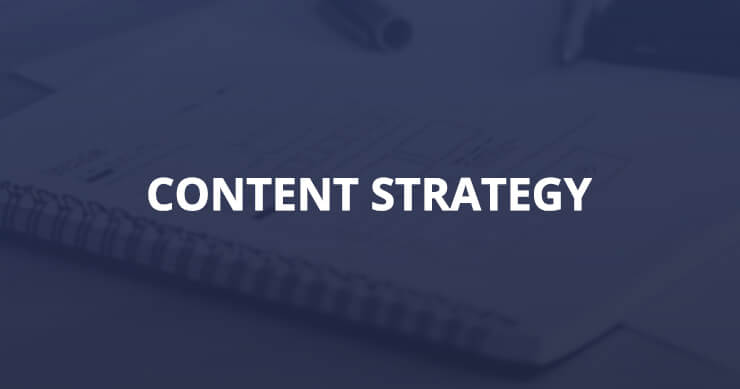If you’re looking for a throw-back to the good old days of marketing, look no further than the business-to-business world. Trade shows, trade publications, feet on the street, and word of mouth are the driving force behind many B2B marketing campaigns. And for good reason – the buy cycle in this space tends to be long and the opportunity to get in the door during early stages of consideration is narrow. And with a lack of consensus about key performance indicators, it’s no wonder some B2B marketers have opted to stay with these traditional marketing opportunities when an investment in SEO for B2B can seem risky or superfluous.
But smart B2B marketers know better.
They know that SEO can help increase their business’ discoverability at various points in the buy cycle. They realize that search engine-based product and service research is an integral part of doing business. And while harnessing the right metrics can be challenging, savvy marketers understand that designing a comprehensive campaign to address all stages of the buy cycle is as simple as paying attention to their audience.
So how do you leverage the power of SEO to add jet fuel to your B2B marketing efforts?
With all this talk of the buy cycle, it will be helpful to break apart each stage, look at the typical considerations, and delve into SEO consulting services.
Problem identification
At this stage, the B2B business or organization has identified an internal problem or opportunity for improvement. The discovery has most likely been made by influencers and decision makers such as managers or executives. To influence potential customers at this stage, you should have already positioned yourself as a resource in your industry. Does your site have a blog that speaks as an authority in your space? If you target specific industries, make sure your SEO copywriting directly targets those industries via focused keyword integration.
For example, if you provide high speed internet services to businesses and are trying to target small tech firms, you may want to craft a blog post series about common concerns and problems that arise in small tech IT infrastructure. All the basics that apply to good SEO will help your post get discovered: optimized title and header tags, internal linking to key areas, keyword use in image ALT and title tags, etc. Content that addresses pain points for your target industries not only positions you as an authority and an ally, but can create a need by suggesting areas for improvement.
Criteria creation
After the need is discovered, B2B decision makers and influencers will outline a strategy to solve the problem, taking costs, timeline, and ease of implementation into consideration. Research, both on and offline, is a large part of this process. Decision makers will want to know what options are available and, most importantly, what their competition is doing.
Testimonials are a powerful tool to influence this stage of the buy cycle. As I discussed in my post about online reviews, the power of peer opinion can have a huge impact on the decision to buy. If you can generate enough testimonials, consider creating industry-specific case study and review pages. Don’t try to outrank your current customers for their branded keywords, but using their company name in h3 elements, image URLs, or image tags are effective ways to make your product or service discoverable if decision makers are searching for their competitor’s name. Make sure to link to the corresponding product or service page where your target customers can learn more.
Organic search
To target the search stage of the buy cycle, your on-site SEO should pander to purchasing agents. It is likely that this person has already been given the specifications for the product or service, but has been told to find the best price, value, and procurement options. If you’ve impacted influencers thus far, you might have made a short-list of providers for the purchaser to consider.
Technical data sheets have been rated one of the most important sources considered in making purchase decisions. Structured data formats such as microdata, microformats, and RDFa will be invaluable in making these data sheets discoverable. If you offer a product, schemas can be used to mark up product specifications such as price, manufacturer, or part number, increasing the chance that your product page will appear in search. Although PDFs are crawlable, they do not offer the same optimization opportunities. Have both an HTML and PDF version of your data sheets available.
If you offer a service, proximity might be heavily weighted by the purchasing agent. If so, check to make sure that your business name and address is displayed identically in your footer and contact page. Use schemas to help crawlers identify your business name, address, phone and fax number.
Evaluation
Once the purchasing agent has found several viable candidates, they may make the purchase on the spot, or compile a narrow list of options to be evaluated by decision makers. If you’ve made it on the list – congratulations! But expect to be pitted toe-to-toe against your own competitors.
To prepare for this stage, you should have gone back to the SEO basics. Evaluate your own rankings, site structure, link building strategy, and social media presence. Your site should be easy to navigate, the design should be clean, and your reputation in the industry should be transparent. The decision may come down to price point, in which case there is little you can do. But make it easy to choose between you and an identically-priced competitor.
Test and selection
This stage will apply if you offer a test, evaluation, or free trial of your product or service. It goes without saying that the option to try your product or service should be apparent on your site. There is a reason that the keyword “free trial” has close to 2.3 million global monthly searches. If you offer the ability to test your product, link to information from the home page.
If you don’t offer a trial, make sure common questions and concerns about your product or service are addressed somewhere on your site. If you’re unsure, ask your sales people what questions they’re being asked so that you can integrate answers into your SEO copy. Don’t let anything come between you and the final stage which is…
Procurement
By this point, if you’ve done all you can to influence your prospects both on and offline, they should know how to contact you and the deal should be signed. But not so fast. The SEO’s job is never done. You’ll still want to optimize your site to be purchase- and CRM-friendly. It is still important that your site is optimized to facilitate the purchasing process. Why? Because all else held constant, it would be a shame to lose the sale to a competitor based purely on convenience. You may not have an “add-to-cart” product or service, but do make the implementation and purchasing process clear either in your FAQs or on a dedicated page.
B2B is all about building relationships, so ensure that your site is tailored to helping customers find information quickly. Stay relevant by continuing to post fresh, pertinent news about your target markets and updating your site frequently with new offers, products, or services. If done correctly, this stage should tie directly into the prep you’ve done for the “problem identification” portion of the buy cycle, and will continue on.
Clearly, these strategies must be contemporized and planned well in advance. Depending on your market and product, it may take several months to a year before your target customer has worked their way through each step. But when the pieces are in place and your site B2B site is SEO-friendly, you will ensure that your company is top of mind during all stages of the buy cycle.
Photo by joelogon, available under a Creative Commons Share Alike license.


